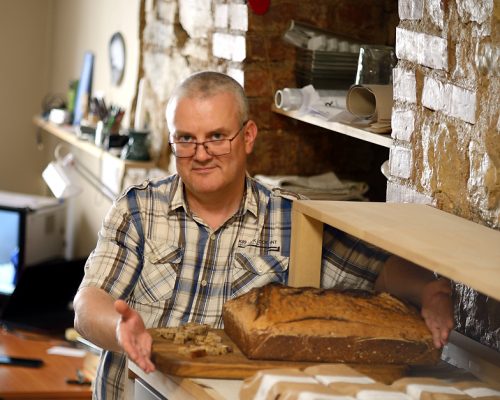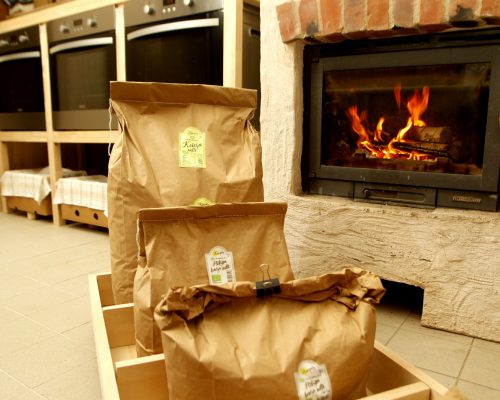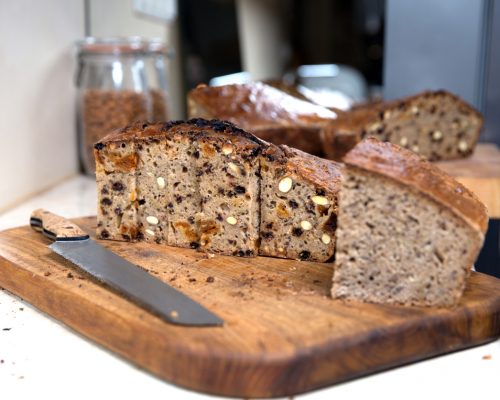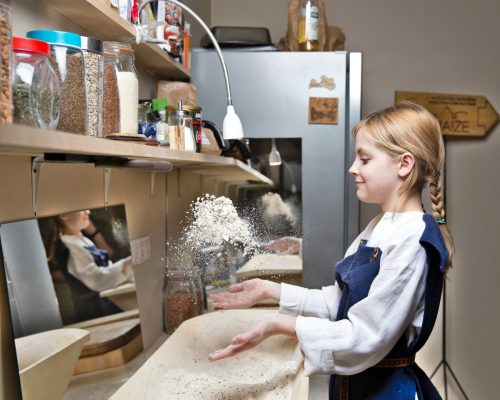Bakery and store Cēsu maize
Self-baked bread. From spelt, buckwheat, barley, oats and additives. Flour mixes for baking bread. Conversations with the baker.
Crop was one of the Livonian export commodities carried by Hanseatic traders to distant lands, where grain yields were poor. Bread has had a special place on our table since forever. There is something primeval and holy about the smell of warm bread. Once a person starts baking bread, it is impossible to stop. Yeast can be made by yourself or received from a baker as a gift. Yeast is like a family member – it has to be fed, spoken to, because it is alive. In each place natural yeast acquires its distinct character, influenced by airborne bacteria, producers and temperatures. Then the dough is kneaded, leavened for many hours and then baked. Bread is baked for three and a half hours at 220°C. Just before the end of baking, it is covered with beaten egg to achieve a glossy top. When a person eats a slice of such bread, he or she is fed for a longer time.
“Cēsis Bread” is located in the old town, near John’s Church. Baker Agnis Elperis is there every day, replacing computer technology with dough, jars of different seeds, flour bags and a hot oven. He talks to visitors, shows, tells them about bread and even gives them a slice of fresh bread. Agnis likes knowledgeable and curious clients who pay attention and eat smart. In the beginning, the baker made bread for his relatives and friends, who encouraged him to open his own bakery. He managed to do so in Cēsis by receiving municipal support for purchasing an oven.
Agnis is eager to talk about the history of grains – barley is our oldest grain, and so is spelt, which is unfortunately rarely grown these days. But spelt is very nutritious and used in “Cēsis Bread”, although it is relatively more vagarious than ordinary wheat. Agnis cooperates with grain growers from the organic farm “Kaņepītes”, where flour is grinded in a stone mill. Grinding with stones is slow, wheat germs are not exposed to too high a temperature.
Whole wheat bread with dried tomatoes and olives, barley bread “Irbes”, green buckwheat bread and sweet spelt bread with dried apricots, almonds, sunflower seeds and linseeds are also delicious. “Cēsis Bread” has been awarded the Culture Mark “Latvian Heritage” for honouring spelt bread. Even naked grain barley, oats and hemp seeds are used for baking. Bread is baked in rectangular shapes and sold, cut into pieces. The bakery also sells flour mixes for baking bread, pancakes and pies.

